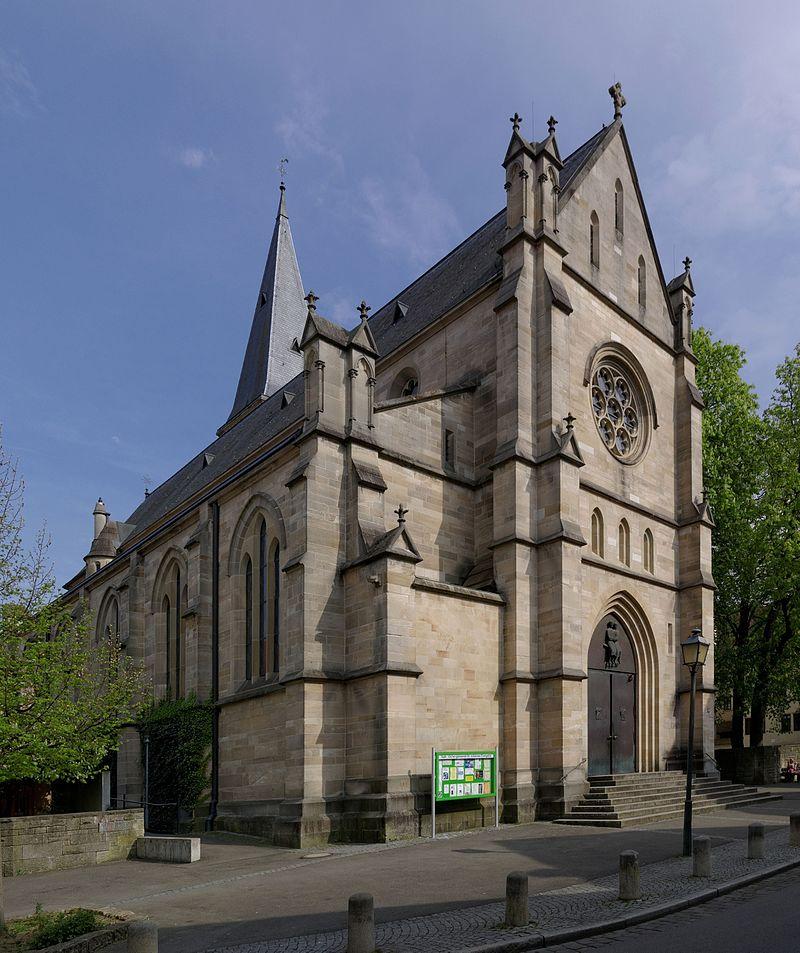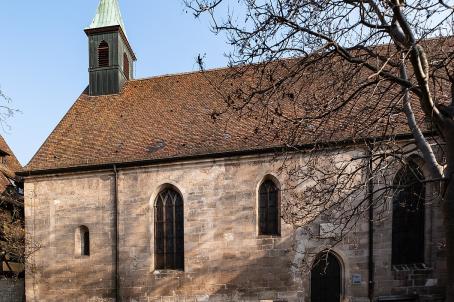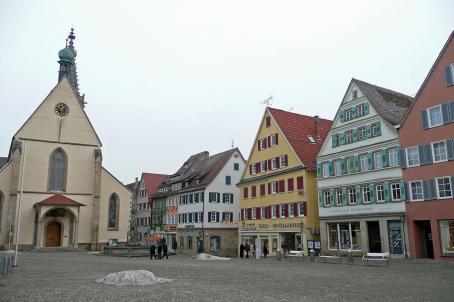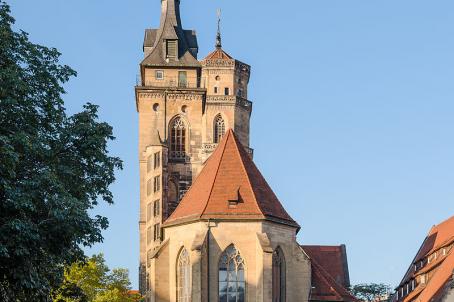St. Johannes Evangelist
The Catholic parish church of St. John the Evangelist in Tübingen was built between 1875 and 1878 by the court architect Joseph von Egle in the neo-Gothic style. After the Second World War, the dark interior and the neo-Gothic furnishings no longer corresponded to contemporary taste and liturgical needs. For this reason, a concept for the renovation of the church was drawn up in 1959, which was implemented from 1961 to 1964. The complete sculpture of the tympanum and the door reliefs were designed by Toni Schneider-Manzell. The interior was freed of all ornamentation and brightened up with colours and higher choir windows.






